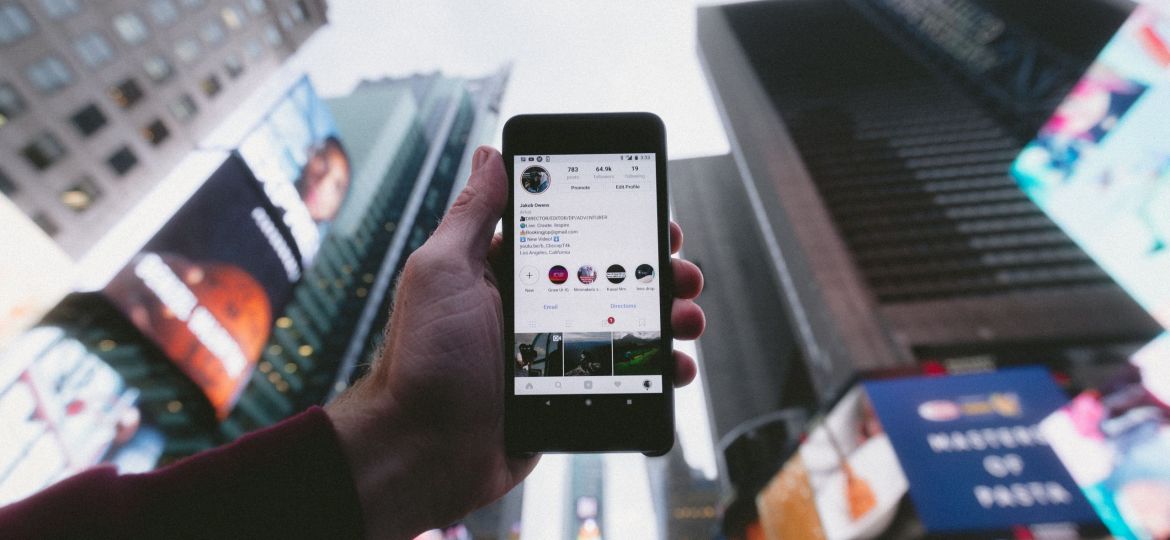
Image: unsplash.com/@jakobowens1
It is safe to say that the past two and a half years have seen the media saturated with health-related messaging.
This is not a new phenomenon, as mass media campaigns have long accompanied disease outbreaks in efforts by health officials to mitigate their adverse effects on society. Take for example this newspaper advertisement from 1918, imploring people to wear masks to prevent the spread of disease during the Spanish Flu:

The current COVID-19 pandemic is not dissimilar to pandemics of the past in many respects, however the way it was communicated varies strongly.
Landing in an increasingly digital era, social media platforms quickly took to the forefront of COVID-19 public information campaigns. Twitter, Instagram, Facebook, and even Tiktok were speedily employed to disseminate strategic public health messaging to the masses.
This differs strongly from even the 2009 Swine Flu epidemic, which generally saw officials rely more on television, radio broadcast and print advertisements to share necessary information.
1. Immediacy
Perhaps the most tangible benefit of using social media for the dissemination of public health information is the immediacy at which it can send messages en masse.
Gone are the days of being restricted by the timelines of traditional media.
Through social media platforms, messages can be sent in an instant, with the benefit of being able to provide the most up to date information as it happens.
How to benefit from this:
Communicators should work in dedicated teams to regularly monitor the ongoing media conversation and be prepared to create relevant content as the need appears.
For example, to counteract misinformation or to address a knowledge gap.


2. Multimedia
While newspapers have the capacity to host visual content, the radio: audio content, and the television: video content, social media can host all three and more.
Recent developments on social platforms include the ability to host live broadcasts across Twitter, Tiktok, Facebook and Instagram to anyone with a smartphone, offering more options than ever when it comes to devising health communications campaigns.
How to benefit from this:
Communicators must consider which medium is most suitable to deliver the message effectively.
Video content can be useful when explaining more complex concepts, while more brief ideas are often best communicated via simpler formats such as a text-based Tweet.


Image: unsplash.com/@martenbjork
3. Two-Way communication
Another major benefit of social media is its two-way nature.
Recipients have the opportunity to respond to official communications publicly.
Effectively, this means that officials can instantly gauge how their message is being received and identify any areas of messaging which may require clarification or follow up.
Useful integrated analytic tools allow the communicator to review comprehensive data relating to how their content is being received, and by who.
How to benefit from this:
It is important that communicators not only create these feedback loops but actively listen to the feedback and adjust future messaging based on the insights.
Messages well received by audiences can be replicated, while those receiving less favourable feedback can be amended or abandoned.


Image: unsplash.com/@jontyson
4. Audience Targetting
Social media platforms open up the possibility of facing either audiences larger than ever before or audiences more niche than ever before.
Social media communicators are not restricted to the viewership of a particular television show, the listenership of a particular radio show, or the visitors of a specific webpage.
Mass audiences that are dynamic and varied can be accessed in the open nature of social media.
If desired, paid social media campaigns can be run to target specific ages, genders, interests or even careers, meaning that messages can be tailored to the needs of very specific groups.
How to benefit from this:
Communicators should utilise targeting tools to reach those who need to hear their message the most.
If a particular message is designed to reach a niche stakeholder group, a quick and effective way to do this is with highly targeted paid advertising.


5. Humanisation
Social media has brought a face to communications, meaning that messages can be delivered in such a way that humanises its content.
Influencers or field experts can be employed to deliver messages to the audience enabling instant engagement and relatability.
Official spokespeople can become public facing in an instant via social media video content, soundbites and live streams – bypassing traditional barriers.
How to benefit from this:
Health communications are often received by audiences within an uncertain and stressful outer environment.
Communicators should assign relevant and trained spokespeople to their social media campaigns and consider delivering complex through them to allow audiences to relate to and find reassurance in a trustworthy human source.


Image: unsplash.com/@lewitt_audio
We hope you found this blog post useful for your own use of social media when delivering crucial public health information. For additional communications training and resources, stay tuned for our upcoming Media Training Programme. Follow us on Twitter or LinkedIn to stay up to date with the latest PANDEM-2 project updates, or subscribe to our newsletter by visiting the pandem-2.eu homepage.
____________________________
PANDEM-2 is a H2020 EU-funded project that aims to develop new solutions for efficient, EU-wide pandemic management. The goal of PANDEM-2 is to prepare Europe for future pandemics through innovations in training and to build capacity between EU member states responding to pandemics on a cross-border basis.

